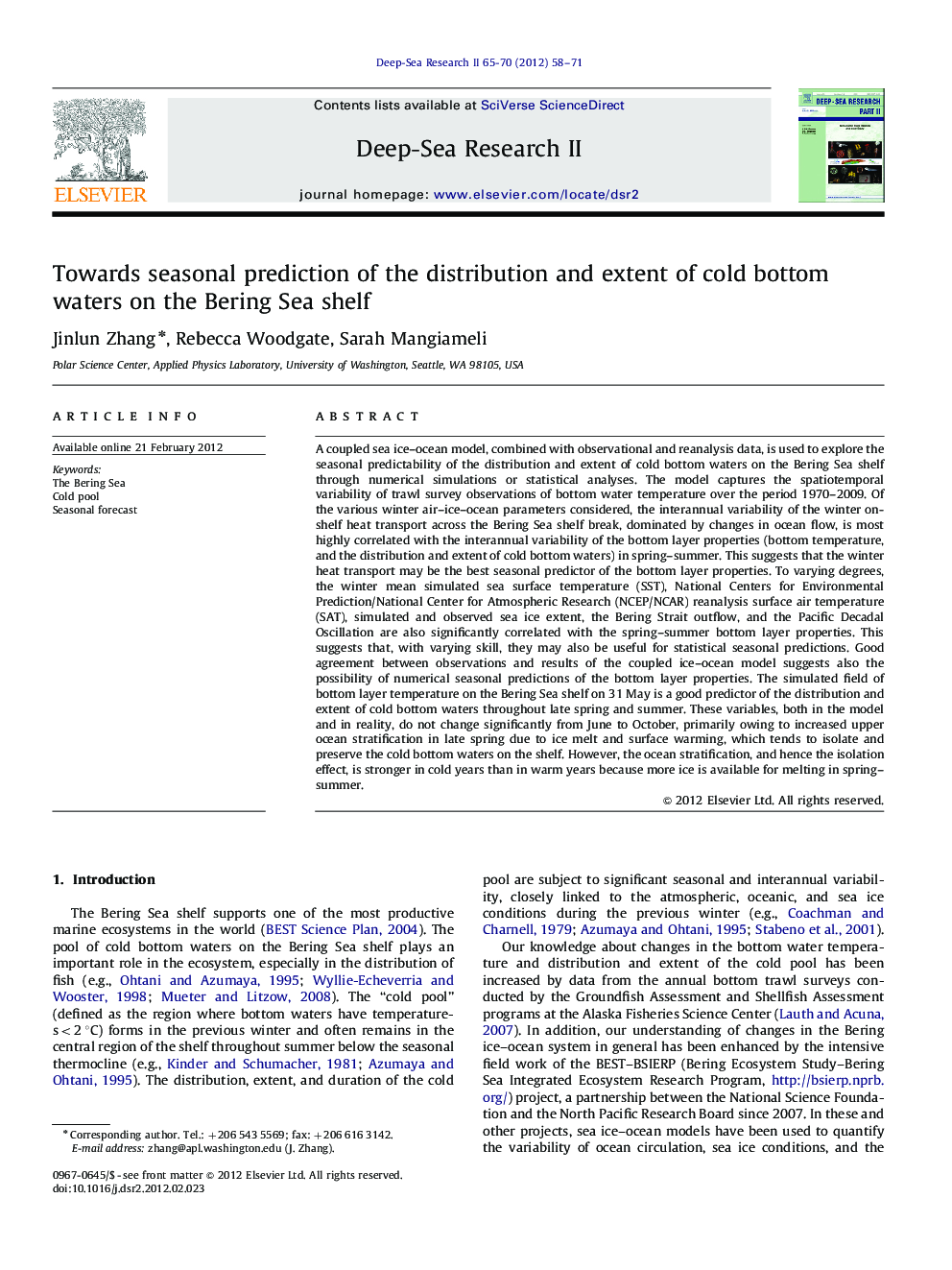| کد مقاله | کد نشریه | سال انتشار | مقاله انگلیسی | نسخه تمام متن |
|---|---|---|---|---|
| 4536732 | 1626456 | 2012 | 14 صفحه PDF | دانلود رایگان |

A coupled sea ice–ocean model, combined with observational and reanalysis data, is used to explore the seasonal predictability of the distribution and extent of cold bottom waters on the Bering Sea shelf through numerical simulations or statistical analyses. The model captures the spatiotemporal variability of trawl survey observations of bottom water temperature over the period 1970–2009. Of the various winter air–ice–ocean parameters considered, the interannual variability of the winter on-shelf heat transport across the Bering Sea shelf break, dominated by changes in ocean flow, is most highly correlated with the interannual variability of the bottom layer properties (bottom temperature, and the distribution and extent of cold bottom waters) in spring–summer. This suggests that the winter heat transport may be the best seasonal predictor of the bottom layer properties. To varying degrees, the winter mean simulated sea surface temperature (SST), National Centers for Environmental Prediction/National Center for Atmospheric Research (NCEP/NCAR) reanalysis surface air temperature (SAT), simulated and observed sea ice extent, the Bering Strait outflow, and the Pacific Decadal Oscillation are also significantly correlated with the spring–summer bottom layer properties. This suggests that, with varying skill, they may also be useful for statistical seasonal predictions. Good agreement between observations and results of the coupled ice–ocean model suggests also the possibility of numerical seasonal predictions of the bottom layer properties. The simulated field of bottom layer temperature on the Bering Sea shelf on 31 May is a good predictor of the distribution and extent of cold bottom waters throughout late spring and summer. These variables, both in the model and in reality, do not change significantly from June to October, primarily owing to increased upper ocean stratification in late spring due to ice melt and surface warming, which tends to isolate and preserve the cold bottom waters on the shelf. However, the ocean stratification, and hence the isolation effect, is stronger in cold years than in warm years because more ice is available for melting in spring–summer.
Journal: Deep Sea Research Part II: Topical Studies in Oceanography - Volumes 65–70, 15 June 2012, Pages 58–71